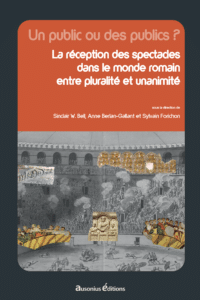UN@ est une plateforme d'édition de livres numériques pour les presses universitaires de Nouvelle-Aquitaine
Collection : PRIMALUNA_23
Un certain nombre de travaux ont déjà été consacrés à la question de la répartition des places dans les édifices de spectacle du monde romain.
par Frederik Grosser
Ob Tierhetzen, Gladiatorenkämpfe, Theaterschauspiele oder Wagenrennen: Die spectacula des Römischen Reichs prägen unser Bild des Imperiums bis heute.
L’article de R.F. Newbold consacré aux jeux dans l’Histoire romaine de Cassius Dion a dressé le premier la liste des spectacles référencés par Dion, et analysé un matériel qui s’est avéré conséquent.
par Patrizia Arena
Depuis la publication en 1976 de l’ouvrage de P. Veyne, Le pain et le cirque, la recherche universitaire concernant les spectacles publics dans le monde romain a connu une “explosion of bibliography”, pour reprendre l’expression employée par K. Coleman et J. Nelis-Clément.
Since the publication in 1976 of P. Veyne’s work Le pain et le cirque, academic research concerning public performances in the Roman world has experienced an “explosion of bibliography”, to borrow the expression of K. Coleman and J. Nelis-Clément. This growth over several decades of research studying the ludi and the munera in the Roman world has made it possible to considerably advance our knowledge of the realia of shows and of the buildings that hosted them.
Depuis la publication en 1976 de l’ouvrage de P. Veyne, Le pain et le cirque, la recherche universitaire concernant les spectacles publics dans le monde romain a connu une “explosion of bibliography”, pour reprendre l’expression employée par K. Coleman et J. Nelis-Clément.
Set between the hills Dzhambaz and Taksim Tepe in modern Plovdiv, Bulgaria, ancient Philippopolis’ theater is a highly visible monument to its city’s prominence in the Roman province of Thrace between the late 1stand 4th centuries CE.


